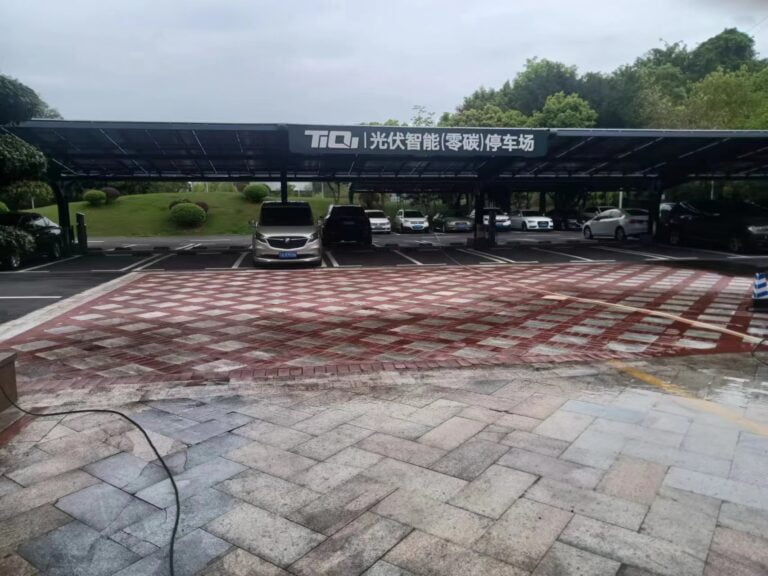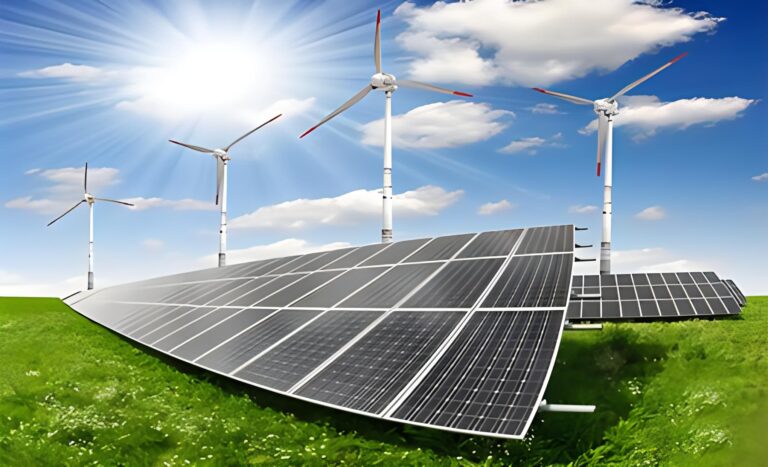Behind the heated race in the new energy storage sector is China’s record-breaking construction capacity in 2023, with a staggering 216.88GW (gigawatts) of new installations in solar photovoltaics. However, alongside this high productivity inevitably comes fierce market competition. As a crucial part of the solar photovoltaic industry, the price war for photovoltaic modules has become an unbearable burden for participating companies.
Since the second half of last year, this industry has been filled with a palpable sense of anxiety. Starting from June 2023, solar photovoltaic module companies began a price war that only escalated over time. By October of that year, a solar company bid below 0.156 dollars per watt for bifacial single-crystal PERC modules in a project tender, marking a significant event that immediately sparked industry discussions. By December, during the second round of solar module procurement for 2023 to 2024 by China National Nuclear Huineng Corporation, the lowest bid received was 0.131 dollars per watt. What’s more, except for one company quoting above 0.156 dollars per watt, all other enterprises quoted below 0.156 dollars per watt.
Entering 2024, even N-type module prices struggle to remain firm. On January 9th, China Power Construction Corporation held bidding for its 42GW solar module framework for 2024. Looking at the bid situation, the lowest bid for N-type modules was 0.143 dollars per watt, while P-type modules were as low as 0.132 dollars per watt.
Industry experts told reporters that for photovoltaic modules, there is already a clear phenomenon of price inversion. This is similar to the situation during the heyday of real estate, where land prices surpassed house sale prices, leading to a situation where “flour” became more expensive than “bread.” The continuous decline in photovoltaic module prices will lead to a scenario where companies face losses as soon as they secure orders. Initiating production will solidify these losses.
Just a year ago, photovoltaic module prices were mostly around 0.286-0.304 dollars per watt, sometimes even exceeding 0.312 dollars per watt. This clearly indicates the white-hot competition in the new energy storage race. A leader of a solar company told reporters, “Without orders, companies have to bear various costs such as labor, factory, and machinery expenses every day. Being idle is also a loss, and without cash flow, the situation for companies could become even more difficult. So, some companies would rather lose some money to secure projects, ensuring that their employees have work first. Moreover, in the long run, having projects on hand will provide opportunities for a turnaround. No one can predict how the market will evolve. As participants in this social trend, companies must get involved to sensitively perceive the market and seize opportunities. As the process of natural selection continues, many weak companies will be eliminated before good market conditions return. Having consistent orders is the key to the continuous development of a company.”
Meanwhile, due to the rapid development of distributed photovoltaics, issues of grid connection and absorption have also emerged. As of now, there are over 150 regions in China with no additional space for distributed photovoltaics, becoming “red zones.” While distributed photovoltaic installations have explosively grown, some regions with high installation proportions are facing problems such as difficult registration, urgent absorption capacity, and challenges in grid connection. In the latter half of 2023, among the six provinces surveyed by the National Energy Administration, apart from Zhejiang, Shandong, Heilongjiang, Henan, Guangdong, and Fujian all experienced problems of insufficient grid capacity in some areas. Additionally, Hebei, Inner Mongolia, Hubei, Liaoning, Guangxi, Jiangxi, and others have also encountered issues of saturated or warning-level distribution grid capacities. Against the backdrop of urgent absorption issues in many regions, energy storage has become an important means for several provinces to solve the problems of grid connection and absorption of distributed photovoltaics. Currently, more than 12 regions have introduced relevant policies or guidelines for distributed energy storage, with over 10 regions proposing specific energy storage ratios.
Social Capital Bullish on the Future of Energy Storage
On February 20th, Yantai City released a plan for the “Manufacturing, Service, and Energy Sector Major Project Competition.” Among these are 15 manufacturing projects, with a total investment of 51.12 billion dollars, and an annual planned investment of 13.7 billion dollars. Topping the list of manufacturing projects is the 10 billion dollar Huangbohai New District Yantai Lihua Large-Cylinder Energy Storage Battery Project, which is also on the list of major projects in Shandong Province. Incomplete statistics show that Shandong Province has 27 energy storage-related projects among its major projects for 2024.
As early as June 30th, 2023, the first domestic “Flywheel Energy Storage + Million-Kilowatt-Level Intermediate Reheat Gas Turbine Unit Joint Frequency Regulation” project was officially launched in Laiwu, Jinan. A large electric gyroscope, 1.5 meters tall and 50 centimeters in diameter, spins rapidly at speeds of up to 15,000 revolutions per minute, marking a breakthrough in flywheel energy storage technology development. In Shandong, every breath of air and every drop of water can “generate electricity.” These new energy storage technologies are crucial support for achieving the “dual-carbon” goal, fostering new energy formats domestically, and seizing strategic high grounds internationally.
By the end of 2023, Shandong’s scale of new energy storage had reached 3.75 million kilowatts, ranking first in the country. In 2023, Shandong added more than 15 million kilowatts of new energy installations, reaching a historical high; cumulative installations surpassed 91 million kilowatts, ranking first in the country in both photovoltaic power generation and new energy storage installations.
Despite the fierce competition in the new energy storage sector, social capital is clearly optimistic about the future. They are entering the fray with substantial investments. According to enterprise data, on February 21st, China Electrical Equipment Group Energy Storage Technology Co., Ltd., was officially established with a registered capital of 2 billion dollars, focusing on energy storage technology services, battery manufacturing, sales of charging piles, and transmission and distribution businesses. The company aims to become the top player in the industry, leading state-owned enterprises in the energy storage business to move towards a world-class level, and attracting investment from 8 companies including CATL.
Industry experts told that the new energy storage sector is attracting a “crazy” influx of capital. Since 2023, financing amounts for energy storage enterprises such as Rongke Energy Storage, Sodium Innovation Energy, Weijing Energy Storage, Electrician Home, Lujia Energy, Precision Control Energy, Xingyuan Borui, and Yun Storage New Energy have all exceeded 100 million dollars. Everyone clearly sees a bright future for the energy storage industry. In 2024, market competition will intensify further as opportunities and challenges coexist in the new energy storage race. Who will have the last laugh and emerge as the ultimate winner? The market is eagerly waiting to find out.



